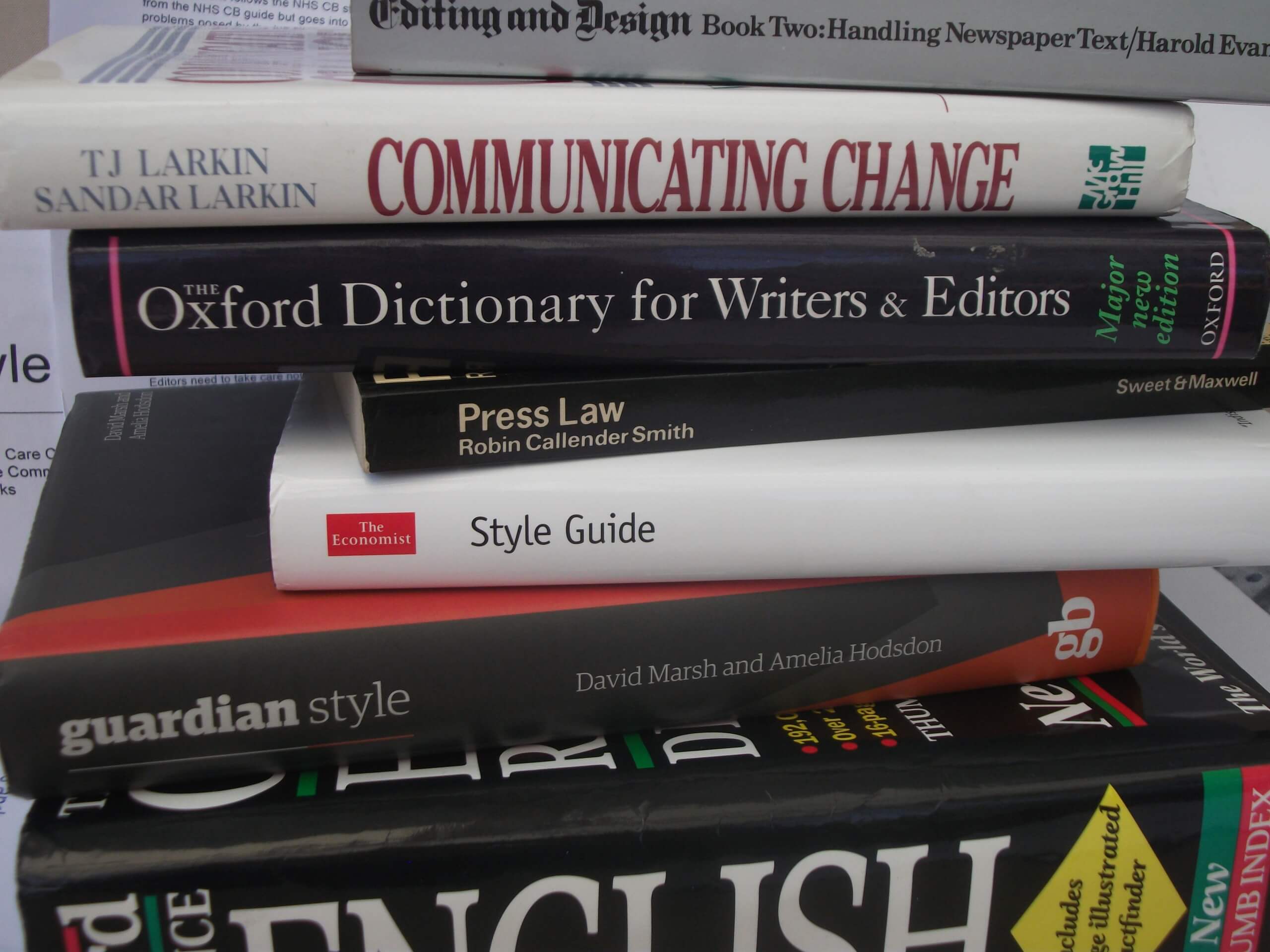Editing and proofreading – what’s the difference?
Clients who commission editing and proofreading sometimes merge or confuse the terms. Knowing the differences helps you to make a well-informed choice. As a result, you’ll avoid misunderstandings, holdups and tussles over costs. You will be completely clear about what to expect. And your editor or proofreader will understand the work’s boundaries and your aims.
What is editing?

Editing is the action before proofreading. Traditionally, it involves sub-editors or subs (working in newspapers) and copy editors (usually in publishing). Subs check and improve the raw text or copy before someone puts the text in the design layout of a page.
Most of my work as an editor is for corporate communications or marketing teams. My clients create raw copy in Word, PowerPoint, or a content management system (CMS). I’ll edit Word documents and track my changes so you can see what I have done. I can also add comments with queries or instructions on slides, Word files and PDFs.
Many sub-editors and copy editors can also work directly in design layouts. A designer usually creates a layout in desktop publishing software like Adobe InDesign. Or it could be online content in a CMS like WordPress. Sometimes, a client will turn the copy in Word into a PDF. The editor will work on the text and accompanying images so they work smoothly for readers.
When to hire a sub-editor or copy editor
A sub or copy editor is the correct person to hire if you want someone to cut a long story short or polish it before it goes online or in print. Their goal is to make your copy understandable and transparent to the reader. That means deleting repetition and jargon, revising text or moving it around until it makes the desired impact.
So, subbing and copy-editing is more than dealing with errors in grammar and spelling. That said, spotting such mistakes are a substantial part of the job. Skilled editors also make sure:
- the story makes sense
- facts are accurate and appropriate
- tone of voice is consistent
- the text adheres to the company style
- it contains no awkward phrases or passive voice
- there are no legal issues that could land you in court.
Copy editors and subs excel at spotting a potential story and suggesting ways to strengthen it. Restructuring content to improve its flow is called substantive editing. They’ll even add a punchy headline. Another benefit is they’ll flag issues that could get you into hot water. Many a sub has saved a publisher from copyright breaches, plagiarism, libel, and accusations of sexism and racism.
The sub/copy editor will return the copy to you for a final check before placing it in a design layout.
Editors v sub-editors
By the way, people use the terms editor and sub-editor interchangeably. However, an editor usually has an overall view of the publication. They decide who writes what, which stories have preeminence and what to drop. The sub will typically report to the publication editor or directly to you if you’re a corporate client.
What is proofreading?

The checking of text on pages – or proofs – comes after editing. Proofreading is the final stage before you print or publish online.
Chiefly, a designer will design the pages and create a digital proof. It’s often a PDF for the proofreader to check. Alternatively, they will give the proofreader access to the CMS, allowing them to make changes directly. You can expect the proofreader to make fewer changes than the sub or copy editor.
As a proofreader, your task is not to make significant changes, such as rewrites, that improve the text. The sub or copy editor should have done that. Instead, your job is to spot errors introduced during the layout stage. They include the following:
- Spelling, grammar and punctuation mistakes since the edit
- Typesetting issues, such as incorrect fonts or sizes
- Inconsistent pagination, hyphenation, capitalisation, etc
- Factual errors like wrong links or references.
When I’m proofreading annual reports, for example, I will go back and forth between textual references and the numbered Notes to the Accounts to check that they match. Unlike the sub or copy editor, proofreaders do not examine style or suggest ways to reword copy. That’s why you should complete subbing or editing before proofreading.
Where can I find out more?
Want to learn more about editing and proofreading? Check out the courses at The Chartered Institute of Editing and Proofreading, which I’m a member of. I recently refreshed my skills at the College of Media and Publishing (CMP), which also has beginner classes. 




